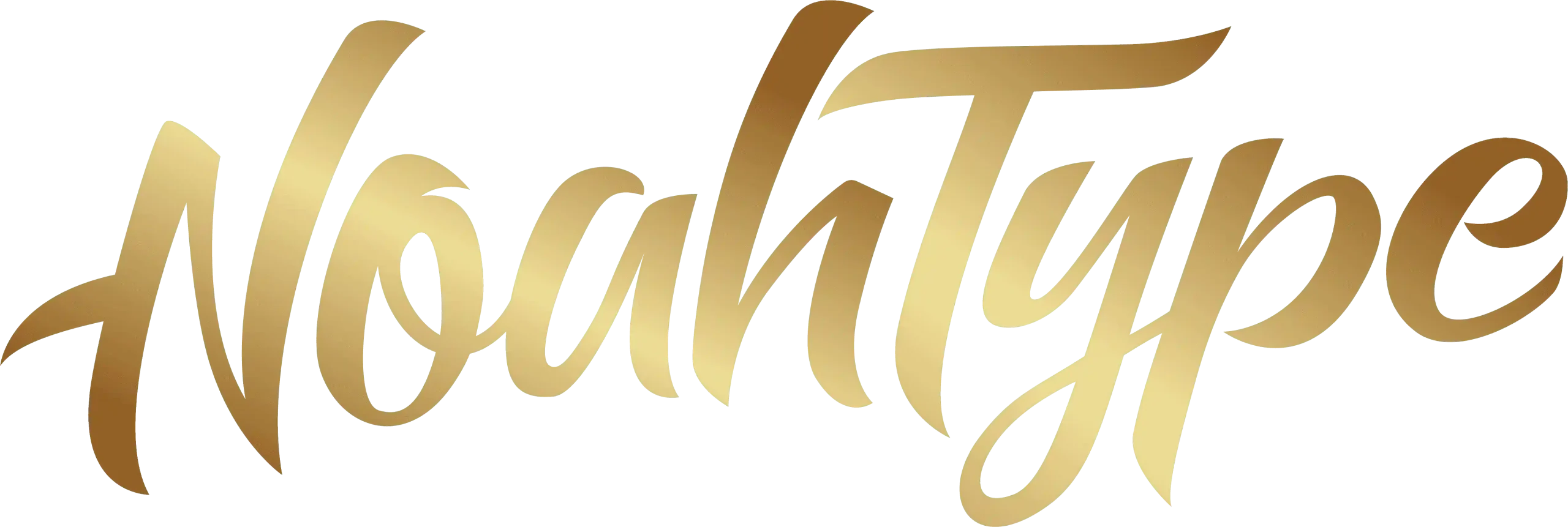Why Typography Is Important For Business Branding
Table of Contents
- Introduction
- What Typography Really Means
- Six Reasons Typography Matters for Business
3.1 Brand Recognition & Recall
3.2 Conveying Brand Personality & Emotion
3.3 Readability, Accessibility & UX
3.4 Consistency Across Touchpoints
3.5 Visual Hierarchy & Communication Flow
3.6 Differentiation & Competitive Edge - How to Choose the Right Typography for Your Business
4.1 Clarify Brand Personality & Tone
4.2 Font Pairing Strategy
4.3 Test in Real Contexts
4.4 Consider Custom / Exclusive Typefaces - Showcasing NoahType Fonts in Action
- Best Practices & Tips
- Conclusion
- References

1. Introduction
Typography often seems like a minor detail, but for businesses it’s a crucial element of brand identity. Fonts silently influence how customers perceive your business — professional, creative, approachable, or premium. This article explains why typography is important for business, how it shapes recognition and trust, and how to choose typefaces strategically.
2. What Typography Really Means
Typography is more than choosing a “nice looking font.” It’s the art and technique of arranging type: selecting typefaces, weights, spacing, line lengths, alignment, and layout. It determines clarity, tone, and emotional resonance.
In branding, typography functions as part of your visual identity — alongside your logo, colors, and imagery. Good typography builds recognition and communicates your values consistently.
3. Six Reasons Typography Matters for Business
3.1 Brand Recognition & Recall
Consistent typography across websites, packaging, and ads makes your brand memorable. Think of Coca-Cola’s flowing script or Apple’s minimalist sans serif. Typography helps customers recognize your brand instantly (Printivity).
3.2 Conveying Brand Personality & Emotion
Fonts carry emotion: a bold sans serif feels strong and modern, while a script font feels elegant or romantic. Choosing the wrong typeface can send mixed signals about your business (Flux Academy).
3.3 Readability, Accessibility & UX
If your typography isn’t legible on small screens or in long text passages, the message fails. Good typography improves readability, user experience, and accessibility for all audiences (MO Agency).
3.4 Consistency Across Touchpoints
Using different fonts for your website, brochures, and ads creates confusion. A unified typographic system reinforces professionalism and strengthens brand trust (Antidote71).
3.5 Visual Hierarchy & Communication Flow
Typography guides the reader’s eye using size, weight, spacing, and contrast. Clear hierarchy ensures audiences grasp key messages quickly and efficiently (Webflow).
3.6 Differentiation & Competitive Edge
In crowded markets, typography can set your brand apart. A distinctive font gives you uniqueness and prevents your brand from blending into competitors (The Logo Company).

4. How to Choose the Right Typography for Your Business
4.1 Clarify Brand Personality & Tone
List adjectives that describe your brand (e.g., friendly, bold, elegant). Match them with appropriate font styles (serif, sans serif, script, display).
4.2 Font Pairing Strategy
Select a primary font for headings and a secondary font for body text. Add an accent font sparingly for decorative use. Ensure harmony between styles.
4.3 Test in Real Contexts
Preview fonts on mobile, desktop, print, and signage. Test for readability in different sizes, resolutions, and backgrounds.
4.4 Consider Custom / Exclusive Typefaces
Custom fonts ensure exclusivity and protect your typographic identity. Even slight modifications to existing fonts can make your brand more unique.
5. Showcasing NoahType Fonts in Action
Here are some examples from NoahType’s font collection that illustrate how typography supports different branding goals:
- Lopez Modern Font — a bold sans serif ideal for headlines, signage, and modern corporate branding. Its clean structure conveys confidence and authority.
- Harella Monoline Display Font — a friendly monoline handwriting font, perfect for casual brands, lifestyle products, or approachable subheadings.
- Waterflowers Calligraphy Font — an elegant script font with swashes and alternates, great for luxury brands, wedding businesses, or boutique logos.
- Sweetzy Display Font — a unique eroded display type, suitable for fashion brands, standout posters, or bold promotions.
- Mango Delight Font — a playful brush font that works well for food, beverages, packaging, or youthful lifestyle brands.
By showcasing fonts with different personalities, NoahType demonstrates how typography can adapt to any business identity.
6. Best Practices & Tips
- Limit brand fonts to 2–3 families for cohesion.
- Define rules: heading vs body font, sizing, spacing, and hierarchy.
- Prioritize legibility and accessibility across all media.
- Document font guidelines in a brand style guide.
- Update typography thoughtfully — frequent drastic changes can confuse customers.
- Test fonts for multilingual support if you plan global expansion.

7. Conclusion
Typography is more than decoration — it’s a strategic business asset. From recognition and trust to differentiation and hierarchy, typography influences how your brand is perceived.
By understanding why typography is important for business and by choosing fonts strategically, you can strengthen your visual identity and build a lasting connection with your audience.
Explore more at NoahType’s font collection to find the perfect typefaces that align with your business personality.
